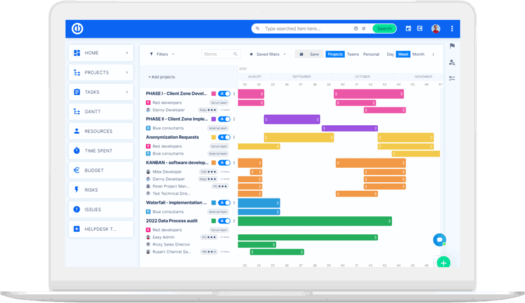Should You Migrate Your Onsite Redmine to Cloud?
Integrating Redmine as a project management tool into your business process can be a convenient solution, but onsite Redmine can be a show stopper. The top struggles for businesses on the Redmine server are managing the data and accessing a dedicated account manager.

Even though Redmine improves time management and collaboration, you cannot depend on this traditional platform when you are aiming for business growth. This is one of the reasons to mitigate your onsite Redmine to the cloud.
Many businesses are turning over to the cloud when it comes to massive data storage and maximum security. Modernizing your Redmine to the cloud will not only offer more data storage but advanced analytics and enhanced cyber capabilities. If you do not find these reasons for migration to the cloud enough to make a decision, stay tuned, we have more for you.
Reasons to Migrate Your Onsite Redmine to Cloud
Below, you will find some topmost reasons to modernize your Redmine to cloud.
1. Flexible Solution
With increasing business needs and bandwidth, on-premise Redmine limits the performance and capabilities. You need more data storage, high-speed systems, and remote access. Migrating to the cloud will resolve all these challenges. Redmine on the cloud will not only provide you maximum data and security, but it offers the topmost flexibility. Not as surprising as it seems, but businesses moving their cloud to Redmine are looking for operational agility.
2. Disaster Recovery
Large businesses can easily invest in high-quality disaster recovery systems, but this can be impossible for small businesses on a budget. Ideally, cloud-based Redmine offers great support to businesses that cannot afford a separate disaster recovering system. When you are on a cloud, the system will back up all your data to other servers after identifying a problem. This will not only save you time to recover your data, but it keeps your platform running. That way, your clients can access your platform without interruptions. You will not receive this level of protection with on-premise Redmine and third-party plug-ins.
3. Instant Updates
The server on the cloud is off-premise, indicating that your platform is out of your sight. So in case of the software update, your service provider will take care of everything, including your security updates. This feature of the cloud will keep you away from all the hassles, and you can focus on more important tasks such as business growth.
Sometimes, when you are updating the on-premise Redmine, the update process may fail. This will intervene with your session until you identify and solve the problems, create a new server, recover the data, and try the updating process again. All this process can be hectic when you have to take care of everything. Additionally, your platform will stop until you go through this entire process. But, when your Redmine is on a cloud, you have nothing to worry about. The system will back up the session when the updating process starts. In case of any trouble with the updating, the server will restore the program from the last active session.
4. Minimized Expenses
Are you wondering how Redmine on the cloud can cut off your expense when on-premise Redmine is free of cost? Without any doubt, Redmine is a free platform, but only at the initial stages. When you integrate third-party plug-in to streamline business processes, the costs get higher. On the other hand, Redmine on the cloud does not require additional subscription charges and management fees. You will only pay your service provider for the platform.
5. Better Collaboration
Cloud Redmine solutions enable you and your teams to work remotely. This means that you can access, share, and edit the platform wherever and whenever you want. This will enhance your business collaboration and help improve your employees’ productivity. For instance, if you are on a business trip and urgently want to update an issue before completion. You can instantly access Redmine on your mobile device and leave comments on the issue. That way, you can save your team’s efforts and time. However, this is not possible with on-premise Redmine. With traditional Redmine, you cannot access the tools and remotely change the requirements or deadline of an issue. You can either text or call them on their phone, which can be confusing at times.
6. Maximized Security
The loss of hardware is nothing compared to losing a platform, especially when you cannot restore all your data. The security of on-premise Redmine and cloud is an important consideration while comparing both hosting systems. When your data is on-premise server, you have to secure all your data which is quite challenging. With the increase in cybercrimes, you should let your critical data on the loose. More and more businesses are trusting the cloud for their data security. The cloud provider manages all your data security protocols. So, before choosing a service provider, go through their privacy policies. These companies will ensure security patches and firewalls to guard your platform and data from cyberattacks. Also, in case of a cyberattack, the system will automatically create a new server and transfer the data and session there without a hitch. Isn’t that amazing?
7. Competitive Edge
When you move your Redmine to Cloud, you are taking the first step to enterprise-class technology. Cloud hosting allows small businesses to grow faster than established and big competitors. Choosing pay-as-you-go solutions means that you are reaching out of the boundaries and disrupting the market while staying within the budget. Not only this solution enhances the flexibility, but it enables you to customize your Redmine according to your preferences and needs. On top of that, you receive maximum uptime, more scalability, and valuable feature to grow faster.
Conclusion
Redmine is a highly functional and popular project management tool. This open-source system is based on Ruby and Rails. But, with time, this tool becomes inefficient and time-consuming. You need to manage and maintain the system on your own or hire a professional IT team. By migrating your Redmine to cloud hosting, you can streamline your operations, future-proof the tools, and optimize the costs. At any moment you find that on-premise Redmine hosting is holding your business down from growth, you need to switch to the cloud. Waiting too much can cause you problems in the near future.

The ultimate Redmine upgrade? Easy.
Get all powerful tools for perfect project planning, management, and control in one software.
